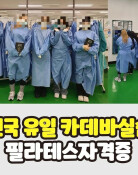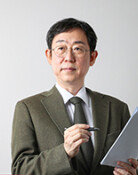Strong Leadership Comes from a Lets Do not Do Attitude
Strong Leadership Comes from a Lets Do not Do Attitude
Posted April. 18, 2007 03:05,
On April 7 at 3:00 p.m., the executives of the Federation of Korean High School Students Association (FKHSA) had a meeting in a café in Guro, Seoul. Among the 14 executives present, nine were females.
The meeting on the summer vacation camp was heated. The summer camp is an event in which some 200 student body executives are invited. Vice chair Han Hye-mi (18, senior at Inchon Arts High School) was explaining the camps programs. Soon, students were debating over the duration of the camp.
Some said, Three days is too long since a festival and a lecture on know-how in running student associations are the major agenda. It should be two days. Others said We need at least three days to have a conversation with students from other schools.
However, there was virtually no male student voice heard. In the end, chair Choi Seong-ho (18, senior at High School Attached to Chung-Ang University) ended the debate by proposing a middle ground, Lets put the pros and cons on our website and ask the opinions of all the representatives.
Your correspondent, who observed the proceeding for five hours, asked the chair, Why didnt the male students say much?
Choi with a hang-dog expression on his face replied, Nowadays, girls are more outspoken than boys, and it is even more so here in students association. As a result, boys are kind of psyched out.
With female student leaders gaining a bigger say, this phenomenon is easily found in almost all co-ed schools. Girls tend to lead meetings and make final decisions.
Girls Getting Bigger Say-
In middle and high schools today, generally, female students account for more than 30 percent of leadership positions.
Shim Chung-bo, a teacher at the Doksan High School in Seoul, predicted, Three out of four candidates who declared their candidacies for upcoming election of student association president were females. If this trend continues, nearly half the schools will have female president for their student associations.
As such, female leaders exercise their influence in areas where female students used to be marginalized.
Sohn Myeong-gwon with nine years of teaching experience under his belt teaches at the High School Attached to Korea University and feels that preparation for field day has changed in the last couple of years.
Only a few years back, male students tended to exclude their female class leader in the selection of teams and then made them practice.
Things sure have changed. According to Sohn, it is common these days for a female president of the student association to propose a female wrestling match and a female soccer match, and a female class leader will also engage in arbitrating between competitive boys, who want to be one of the players in the field day.
Girl Students Dont Tolerate any Sexist School Regulation-
Kim Yeong-ran of the High School Attached to Chung-Ang University said, Earlier this month, a female student was elected as the president of the student association by pledging to make it possible for girls to wear sneakers in school. This kind of election pledge was non-existent only a few years back when only boys were running in the elections.
The High School Attached to Chung-Ang University is considering changing the particular regulation which this president of the student association took issue with.
Negative Image of Female Leaders is Gone-
It was true that not only males but also females themselves had a perception that successful women are selfish and cold-blooded.
Female student leaders are changing this perception. Lee Gyeo-rye (17, sophomore at Sung Moon High School in Anyang City) is the class leader and proposed a manito game as an icebreaker among new classmates.
Manito is an Italian word, meaning a secret friend. In the game, you choose a friend through a lottery drawing and become friendly to that person like a guardian angel.
Those who want to become friends with new classmates but had hung out only with old friends welcomed the proposal.
Choi Jin-hyeok (17) from the same class said, Male class leaders tend to look the other way when there is friction among classmates, but female leader want to solve the problem and create harmony in the class.
Female leaders are regarded as the ones who lead by example. They say, Lets do this, rather than Do this. No wonder, female leaders are seen as leaders with big hearts.
Jang Jong-hwan, a teacher at Sahm Yook High School, said, Female student leaders themselves clean their classrooms with their peers so it is very hard for anyone to go against what they do. They want to give as many participation opportunities as possible to their peers when preparing for school festivals. This is their strong point.
In a country where high school students feel much pressure from the college entrance exam, the fact that the number of female student leaders are growing is helping to change the stereotypes of female leaders.
Gwak Dong-chan, a teacher at Changdong High School, said, Because of the college entrance exam, it is difficult for Korean high school students to participate in extracurricular activities. But nowadays, female students are eager to get involved in those activities. The simple fact that girls voluntarily put time and efforts into student association and club activities earns them respect from other students.
gaea@donga.com alwaysj@donga.com







